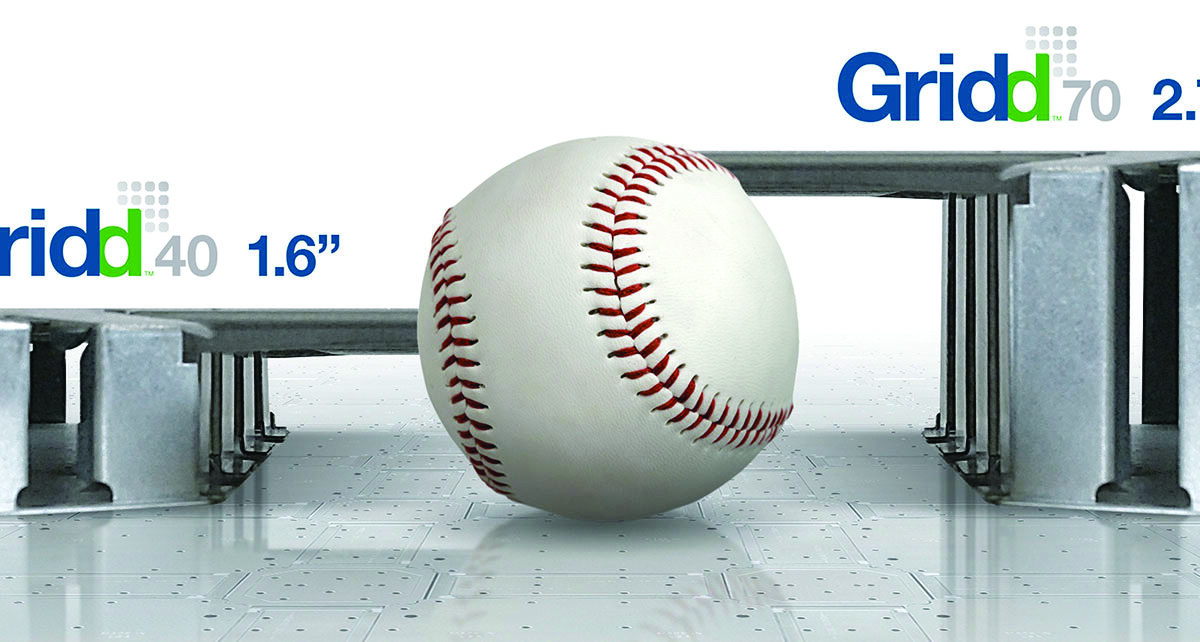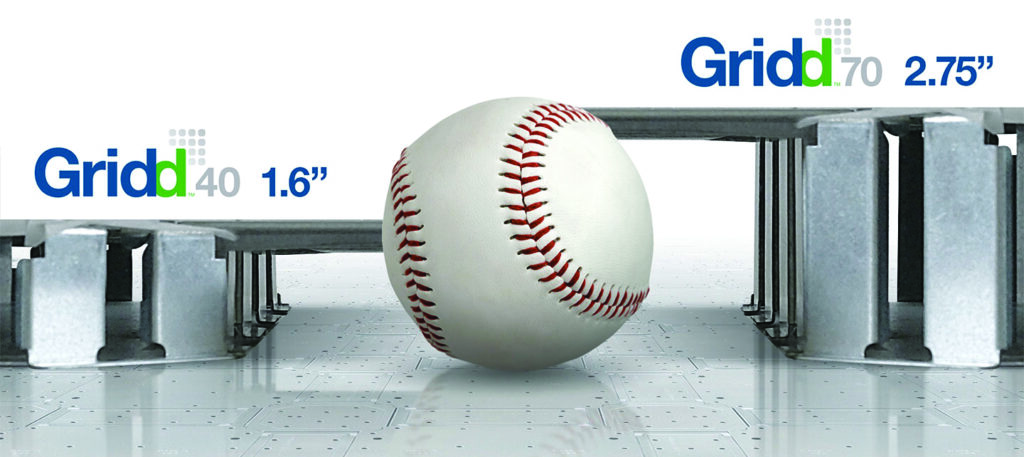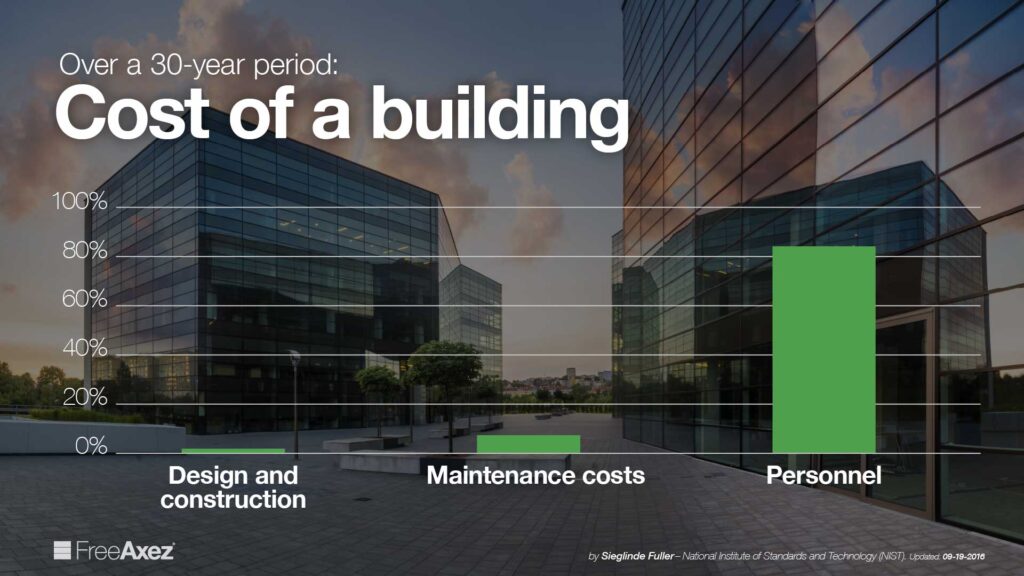
Environmental, Social and Governance (ESG) factors have taken hold across corporations and institutions. Earnestness and good intentions intact, executive management is looking for concrete solutions that contribute to ESG. One of them, literally, is sitting above the concrete. Gridd by FreeAxez is a low-profile raised floor and cable management system that has been found to be a key contributor to the circular economy. Lisa Whited, author of Work Better. Save The Planet., investigated for nearly a year, authoring the research paper, The Circular Economy of Gridd, and spending time with its president and founder, Earl Geertgens.
Starting his career as a commercial carpenter, Geertgens observed that the electricians were there at the beginning of a project, and they were still on their ladders dealing with the wiring in the ceiling when other contractors came back months later. His idea was to get wiring out of the ceilings, power poles, and furniture systems.
From their discussions and interviews, Whited offers Geertgens’ insights into the most important aspects of the Gridd system that benefit facility, real estate and business managers looking for a far-ranging impact on workplace space and people management while using a zero-waste solution.
Gridd by FreeAxez is a low-profile raised floor and cable management system available in two heights: 40 mm (1.6 inches) or 70 mm (2.75 inches), which is installed on top of a constructed floor. Wires and cables are laid within the system, making electrical components far easier to access than when they are buried in walls, as they are in conventional construction. The Gridd system is also much less intrusive than core drilling concrete slabs to install wiring into a space.
Gridd is composed of interconnecting components (think LEGO bricks and elements) and does not require fasteners, screws, or rivets that may wear out over time. Because of the minimal number of components, durable material and the overall design of Gridd, onsite construction waste is reduced to near zero. Gridd is a product that can be used, disassembled, relocated and reused repeatedly. Because of the way Gridd is designed, manufactured, and installed, the product contributes to the circular economy.
What is the history of FreeAxez and Gridd?
Geertgens: Gridd revolutionized the way businesses thought about wire management and adaptive cabling distribution beginning in 1999. Buildings needed to modernize but had no way of coagulating all their technology and devices into a single unified system. Gridd provided a solution that is not only effective, but also incredibly flexible. Today, modernization requires constant change in addition to technological advancement, making the adaptability of a workplace crucial. With Gridd, businesses can easily reconfigure and rearrange their workspaces as much as they want. The Gridd design reduces the cost and time of this process to a degree that never has been seen before. Companies are now able to implement major changes to their environment without hindering employees and breaking budgets, opening the doors to a whole new level of productivity.

What do facility managers need to know about Gridd?
Geertgens: There are four key aspects FMs should know:
- Gridd can make some of their biggest challenges – which often are related to quick turnaround reconfigurations, relocations, and changes in real estate requirements – far easier to manage.
- Gridd is being used by some of the largest global organizations and has been for more than 25 years. More than 35 million square feet of Gridd has been installed.
- Gridd Mobile Augmented Reality App allows facility managers to “see” through the floor as if they have X-ray vision. Walking the floor with a mobile device, the FM can see where all wires are located and quickly identify what needs to change at exact locations to support an evolving floor plan.
- The flexibility of the system benefits the corporation and makes the FM look like a hero. With conventional construction, you would not be able to restack 10,000 square feet in a weekend or relocate two conference rooms overnight. But you can with Gridd.
Let me give you a specific example. A large technology client increased their head count for the entire building by 50% from the time the space was built until they opened the office. With Gridd, they were able to efficiently add headcount and the seats they needed by reconfiguring whole floors in a weekend. Especially in organizations that are dealing with workforce challenges to recruit and retain big talent and demanding professionals, Gridd can be a game changer.
What do architects need to know about Gridd?
Geertgens: For architects and interior designers, it’s about investment, environment, and cost analysis.
- Gridd provides fundamental cost savings to the client over the long view, especially when considering its impact on moves and changes.
- IT and technology are essential in today’s environments (work, school, hospitality, healthcare, retail – all types of places). Gridd allows for dynamic and adaptable space use and easy access to power and data connections without the need for aesthetically detracting power poles or core drilling.
- General contractors may have “construction inertia” and not be familiar with low-profile cable management. This will require the architect and interior designer to advocate for a deeper cost analysis of using a conventional electrical approach (wires in walls, core drilling, etc.) vs. using Gridd.
What should general contractors know about Gridd?
Geertgens: There are several important distinctions about Gridd of which contractors should be aware, including:
- Gridd is not the same as a traditional post and panel raised floor system which does not provide easy access to wires, cables and pipes under the floor. Traditional systems have heavy panels that require the use of a special tool to access the plenum. They also require outside contractors or highly trained personnel to service them.
- GCs may be focused on the first-cost world vs. long-term use because often that is what a client focuses on. However, if the GC undertakes an integrated delivery process, collaborates with the design team and considers how Gridd’s use impacts the other trades in a holistic fashion, the project team can deliver a solution that will save the client significant money and time over the long term.
- If the GC is working in an open ceiling space that has one tenant above, and a different one below, then Gridd removes disruption to either tenant by removing the requirement for core drilling.
How frequently is Gridd moved and what market segments seem to relocate it the most?
Geertgens: We have a segment of clients in commercial offices who move Gridd over the weekends. Recent client moves include configuring a space, returning the floor to the landlord, and then taking Gridd back to reinstall elsewhere. Other clients are expanding, adding it to their workspace. Gridd offers a solution to high-tech business environments across verticals, such as a
- Fortune 500 insurance company
- Internet services company, and a
- Higher education research facility.
The floor system also has been repurposed to an entirely different company and used for a flexible incubator start-up.
What else should we know about Gridd?
Geertgens: With today’s changing ways of working, recruitment and retention challenges, and evolving technology, Gridd provides a solution that can help corporations remain competitive, nimble and responsive because it has stood the test of time. In FreeAxez’s 25+ years, the Gridd Systems have evolved to meet the ever changing needs of the industry, but nothing has been designed into obsolescence. All new components are compatible with the system that was installed 25 years ago and will continue to be for years to come. Gridd delivers the power to change for the life of a facility and beyond.
Visit FreeAxez and see Gridd in NeoCon booth 7-5098.




